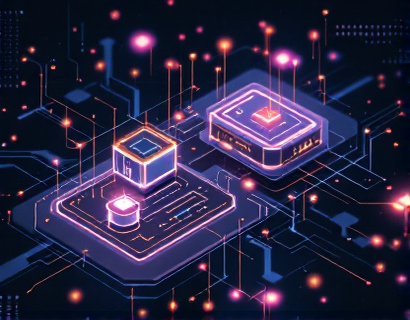Next-Gen Connectivity: Transforming Business and Personal Communication with Advanced Telecom and Internet Solutions
The rapid evolution of telecommunications and internet services has revolutionized the way businesses and individuals connect, communicate, and conduct operations in the digital age. This transformation is driven by advanced infrastructure and specialized software solutions that prioritize quality and customer satisfaction, ensuring reliable and efficient access to essential digital services. The impact of these advancements is profound, empowering users to navigate the modern digital landscape with unprecedented ease and effectiveness.
At the core of this transformation is the development of next-generation telecommunications networks. These networks leverage cutting-edge technologies such as 5G, fiber optics, and satellite communications to provide faster, more reliable, and wider coverage. 5G technology, for instance, offers peak data rates up to 20 Gbps, latency as low as 1 millisecond, and the ability to connect millions of devices simultaneously. This level of performance is crucial for applications that require real-time data processing and high bandwidth, such as autonomous vehicles, remote surgery, and augmented reality (AR) and virtual reality (VR) experiences.
Fiber optics, another cornerstone of modern telecommunications, uses glass or plastic fibers to transmit data as light signals. This method offers significantly higher bandwidth and lower signal loss compared to traditional copper wires, making it ideal for high-speed internet and enterprise-grade connectivity. Fiber-to-the-home (FTTH) and fiber-to-the-building (FTTB) deployments have become increasingly common, bringing ultra-fast internet to homes and businesses across urban and rural areas. The widespread adoption of fiber optics is transforming the digital infrastructure, enabling seamless streaming, cloud computing, and other data-intensive activities.
Satellite communications, while often associated with older technologies, have also seen significant advancements. Modern satellite systems, such as Low Earth Orbit (LEO) constellations, provide global coverage with low latency and high capacity. These systems are particularly valuable in remote and underserved regions where traditional wired infrastructure is impractical. LEO satellites can deliver high-speed internet access to areas that were previously offline, bridging the digital divide and opening up new opportunities for education, healthcare, and economic development.
Beyond network infrastructure, specialized software solutions play a vital role in enhancing connectivity and communication. These solutions include advanced network management systems, software-defined networking (SDN), and network function virtualization (NFV). Network management systems monitor and optimize network performance, ensuring that resources are allocated efficiently and that potential issues are identified and resolved proactively. SDN and NFV, on the other hand, allow for greater flexibility and scalability in network operations by decoupling network functions from proprietary hardware and managing them through software.
For businesses, these technologies translate into more robust and adaptable IT infrastructures. SDN enables organizations to create dynamic, programmable networks that can quickly respond to changing business needs. NFV allows companies to deploy network functions as software applications, reducing the need for physical equipment and lowering operational costs. These advancements not only improve network reliability and performance but also enhance security and compliance, which are critical for protecting sensitive data and meeting regulatory requirements.
For individuals, the impact of advanced software solutions is equally significant. Smart home devices, for example, rely on sophisticated software to integrate various appliances and systems, creating a seamless and convenient living experience. Voice assistants and smart speakers use natural language processing (NLP) and machine learning to understand and respond to user commands, making technology more accessible and user-friendly. Additionally, cloud-based services and applications enable users to access their data and tools from anywhere, fostering a more flexible and productive work-life balance.
The integration of advanced telecom and internet solutions with IoT (Internet of Things) devices further amplifies their transformative potential. IoT devices, ranging from smart sensors to connected cars, generate vast amounts of data that need to be processed and analyzed in real-time. Edge computing, which involves processing data closer to the source rather than in centralized data centers, is crucial for reducing latency and improving response times. This is particularly important for time-sensitive applications such as industrial automation, smart cities, and healthcare monitoring.
In the business sector, the convergence of telecom and IoT technologies is driving the adoption of Industry 4.0 initiatives. These initiatives leverage big data, AI, and machine learning to optimize manufacturing processes, enhance supply chain management, and improve product quality. For instance, smart factories equipped with IoT sensors can monitor equipment performance, predict maintenance needs, and adjust production schedules in real-time, leading to increased efficiency and reduced downtime. Similarly, retail businesses can use IoT-enabled inventory management systems to track stock levels, automate reordering, and provide personalized shopping experiences to customers.
For individuals, the benefits of IoT extend to everyday life. Smart home systems can automate lighting, heating, and security, creating a safer and more comfortable living environment. Wearable devices and health monitors can track vital signs, provide fitness insights, and alert users to potential health issues. The integration of IoT with telecommunications ensures that these devices remain connected and functional, even in areas with limited infrastructure, thereby expanding their utility and reach.
The transformation brought about by advanced telecom and internet solutions is not without challenges. One of the primary concerns is the digital divide, which refers to the gap between those who have access to modern information and communication technologies and those who do not. To address this, telecom providers and governments must collaborate to expand infrastructure to underserved areas, offer affordable services, and promote digital literacy. Initiatives such as community networks, public Wi-Fi hotspots, and subsidies for low-income households can help bridge the digital divide and ensure that everyone can benefit from the advancements in connectivity.
Another challenge is the need for robust cybersecurity measures. As more devices and services become interconnected, the attack surface for cyber threats expands. Advanced telecom and internet solutions must incorporate stringent security protocols, such as encryption, multi-factor authentication, and continuous monitoring, to protect against breaches and ensure user data privacy. Organizations must also invest in employee training and awareness programs to prevent human errors that could compromise security.
Environmental considerations are also crucial in the deployment of next-generation connectivity solutions. The energy consumption of data centers, network equipment, and IoT devices can have a significant environmental impact. Telecom providers and manufacturers are increasingly focusing on energy-efficient technologies and sustainable practices, such as using renewable energy sources, optimizing data center cooling systems, and designing devices with longer battery life and recyclable materials.
Looking ahead, the future of connectivity holds even more promise. The development of 6G technology, expected to succeed 5G in the 2030s, promises even faster speeds, lower latency, and greater capacity. 6G is anticipated to support a wide range of new applications, including holographic communications, advanced AI-driven services, and fully autonomous systems. The integration of quantum communication and computing could also revolutionize data security and processing capabilities, opening up new frontiers in technology and innovation.
In conclusion, the advancements in telecommunications and internet services are transforming the way businesses and individuals connect and communicate. Through the deployment of advanced infrastructure and specialized software solutions, these technologies are enhancing connectivity, reliability, and efficiency. By addressing challenges such as the digital divide, cybersecurity, and environmental sustainability, the industry can ensure that the benefits of next-generation connectivity are accessible to all. As we continue to innovate and adapt, the digital landscape will become even more interconnected, empowering users to achieve greater success and convenience in both their personal and professional lives.










































